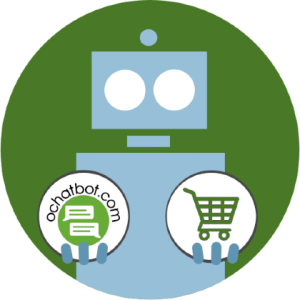AI—“Will it help us or replace us?” mused computer scientist Mesan Ali in his recent Unlayer article.
Though a tantalizing thought, there does seem to be a clear answer. For the time being, AI does not seem set to take over human ability due to its certain drawbacks and limited creative potential.
Without a doubt, this powerful tool brings strong benefits to the table. For example, it has an impressive ability to rapidly analyze large sets of data, which in turn can target audiences, predict business solutions, and even identify consumer behavior trends.
However, these great possibilities are tempered by the various setbacks associated with AI. In fact, such obstacles may even prevent an enthusiastic marketer from fully embracing the AI revolution.
What Role Can AI Play in Marketing?
AI can be a highly effective marketing tool in a number of ways. Let’s take predictive analytics as our first example: this AI technology is capable of analyzing huge swathes of data in record time, which can then generate instant solutions for your business headaches.
As for Natural Language Processing (NLP), this tool can identify trends within spoken language and use this information to perform simple tasks. Chatbots are a great example of NLP (and an important part of customer self-service investment); they can provide round-the-clock, high-demand customer support.
Next up, we have machine learning, a form of AI that has proved its usefulness by being able to calculate highly efficient decisions. It does this by analyzing data, such as customer behavior and pricing strategies.
Finally, we have deep learning, which uses video recognition and image classification to create tools like automated chat systems and auto-creating images. Interest piqued yet?

The Benefits of AI in Marketing
If you’re not yet convinced, then consider the following benefits of AI in marketing:
- Reduced costs
- Personalization of campaign material and content
- Efficient decision making
- Improved data measurement and analysis
AI can be used for a seemingly endless list of tasks, such as segmenting traffic, providing qualified leads, and upselling leads.
Sounds great, right? Well, to wield this weapon wisely, it’s good to be clued up on the potential challenges associated with this technology. Let’s explore them.
6 Biggest Challenges of AI Marketing and Their Solutions
Many of the challenges associated with AI in marketing stem from the fact that this technology is still in its early days. Due to this, the most prominent issues for you to contend with are those of integration, cost, and knowledge gaps.
But fear not. Not only will we explore the six biggest challenges in-depth, but we’ll also detail the solutions you can take to avoid them.

Generative and Scripted AI to engage shoppers in conversational eCommerce.
Create happy customers while growing your business!
-
1 out of 4 shoppers make a purchase on average*
-
5% to 35% Increase in AOV*
-
25% to 45% Reduction in Support Tickets
WE GUARANTEE RESULTS!
1. Lack of knowledge
Understandably, this is probably one of the biggest obstacles for marketers to navigate. They need to be cognizant of the latest industry trends, challenges, and regulations surrounding data, as well as how AI can specifically affect digital marketing. That’s quite a lot!
As AI is such a complex and recent phenomenon, many people lack this knowledge currently.
From this lack of comprehension comes fears and myths that surround AI; some believe, for instance, that a whole data science team is required to navigate AI.
Luckily, this knowledge gap is easily surmounted. It’s simply a question of learning as much as you can about AI and how it relates to marketing.
This can look like taking courses, reading up on the subject, and talking to other marketers. And once you’ve become an AI expert? You’ll need to share that precious knowledge with the rest of your marketing team, of course.

This might prove difficult if you all work remotely, but try using solutions like RealVNC. This software allows you to remotely control another computer, allowing you to actively guide and educate team members.
2. AI-Integration
So, you’ve read the ebooks and listened to the podcasts. Now, you’re an AI marketing pro, and you know exactly what tools you want to use.
And yet, another hurdle crops up—that of integration. AI tools are not small programs that can be easily merged into legacy systems.
No—often, whole new interfaces need to be set up; coding may even be required. Developers are needed to feed in data, label and store said data, and then implement data infrastructure. Models need to be trained and tested to check the effectiveness of your AI tool to ensure that they obtain high-quality results.
This can be difficult to implement into legacy systems, which often lack the correct structure. Indeed, they might not have the powerful hardware required for all that data that AI generates and needs to store. However, many platforms have taken steps to support AI integration. For example, Vonage AI-powered chatbots can be combined with their other services, like Vonage virtual fax and cloud phone services, and then integrated into your CRM.
Cloud applications like this have been used by companies for many years to circumvent physical servers, as they offer flexibility and resilience when building and distributing apps. In short, opting for outsourced and affordable cloud-based AI solutions means you don’t have to create everything in-house.
3. Training and costs
As mentioned above, integrating new AI systems into their legacy counterparts can cost a fair sum. For small- and mid-size businesses, this simply isn’t an option. Luckily, you can outsource your AI needs by using native cloud applications to help reduce the price tag.
What can’t be skimped on is the training required to get the most out of your AI tools. No matter how expensive or extensive they are, your tools are useless unless they have been trained in alignment with your marketing goals.

What this actually looks like is feeding your AI tools with a constant stream of information trends, customer behavior, and any relevant context.
The solution to this issue? First, a good old-fashioned knuckling down and spending time focusing your AI tool on your specific marketing aims.
But you may also want to cut costs elsewhere to focus on AI tools. For example, using a virtual PBX service can help save money as it’s more cost-efficient than a traditional phone system.
4. Data
A word on data. By now, you’ll be aware that AI tools require huge quantities of data. However—not all data is created equally.
When training your AI tools, it’s important that you use accurate and high-quality data. This looks like gathering data from the right sources and making sure it’s reliable (or using AI to generate market research itself!). Otherwise, this can impair AI comprehension and result in poor results.
This obstacle is easy enough to navigate; like the point above, just take some extra time and pay attention to make sure you’re using good-quality data.
In a similar fashion, it’s important not to skimp on good-quality customer service and the data it produces. Using VoIP call center solutions lets you provide excellent customer support while collecting and analyzing call data.
5. Data collection
Data collection and data policies have been heavily impacted in the EU by GDPR (General Data Protection Regulation). Since 2018, GDPR has tightened regulations around how data is collected as well as how it’s stored.

In essence, users need to be aware of when, how, and why their data is being used by your company, and they cannot be tracked by their data either.
Modern “netizens” are aware of their rights, and the regulatory authorities are on their side. For all these reasons and more, it pays to collect data in an ethical and law-abiding way.
Indeed, more and more customers are rewarding ethical companies with loyalty. This can be an effective tool for drawing customers to your business, so using ESG software may be an option for you here.
What is ESG software? It’s software that measures your company’s environmental, social and governance performance. Knowing how you measure up against ESG metrics is important in today’s ethically-minded world. Plus, you’ll gain an understanding of where to focus your time and resources.
6. Lack of creativity
Finally, a word of warning that AI lacks the creativity that comes from humans.
This may not be a challenge when it comes to automating mundane tasks, but it is important to bear in mind if you are integrating AI into digital marketing campaigns.
In short, the material may lack the intuition and emotion that people naturally inject into campaigns—which is often what audiences connect most with. There are also discussions around the ethics of creating AI art, which marketers should be sensitive to.
With that in mind, AI tools should only be used—at the moment—to impart insights gleaned from data. They should not be used to replace an entire marketing department with all its creativity, warmth, and personality.
In other words, learn what AI can do for you and enjoy your freed-up time to create more inventive, data-driven marketing campaigns.
AI: The Future of Marketing
AI certainly presents some obstacles to navigate. However, this complex and multifaceted tool has the potential to revolutionize how we do marketing in the future. In fact, it’s already making waves in the present.
It may take some extra time, focus, and, unfortunately, money. But we have no doubt that the results will speak for themselves.
- The Role of Chatbots in Enhancing Customer Experience: A Deep Dive - March 14, 2024
- Tackling Low Conversion Rates: A/B Testing Strategies Fueled by AI-Based Insights - March 14, 2024
- Why Support Bots Can’t Keep Up: The Case for E-commerce Specific Chatbots - February 28, 2024


